The use of permanent magnets in electrical engineering and energy
Today, permanent magnets find useful applications in many areas of human life. Sometimes we do not notice their presence, however, in almost every apartment in various electrical appliances and in mechanical devices, if you look carefully, you can find permanent magnet… Electric shaver and speaker, video player and wall clock, mobile phone and microwave oven, refrigerator door, finally — permanent magnets can be found everywhere.
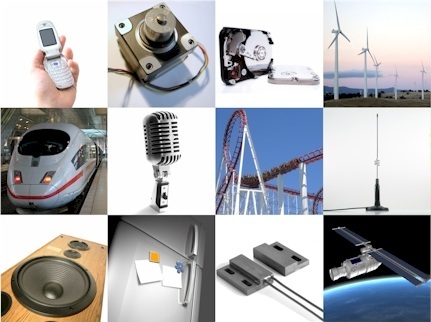
They are used in medical equipment and measuring equipment, in various instruments and in the automotive industry, in DC motors, in acoustic systems, in household electrical appliances and in many, many other places: radio engineering, instruments, automation, telemechanics, etc. . — none of these areas are complete without the use of permanent magnets.
Specific solutions using permanent magnets can be listed endlessly, but the topic of this article will be a brief overview of several applications of permanent magnets in electrical engineering and energy.
Electric motors and generators
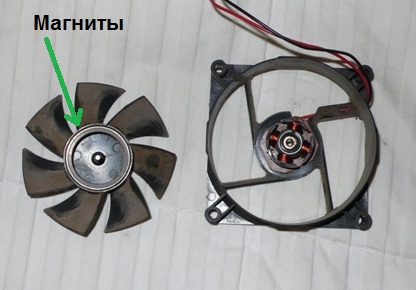
Since the time of Oersted and Ampere, it has been widely known that current-carrying wires and electromagnets interact with the magnetic field of a permanent magnet. Many engines and generators work on this principle. You don't have to go far for examples. The fan in your computer's power supply has a rotor and a stator.
A vane impeller is a rotor with permanent magnets arranged in a circle, and the stator is the core of an electromagnet. Reversing the magnetization of the stator, the electronic circuit creates the effect of rotating the magnetic field of the stator, after the magnetic field of the stator, trying to be attracted to it, follows the magnetic rotor - the fan rotates. Hard disk rotation is done in a similar way and works in a similar way many stepper motors.
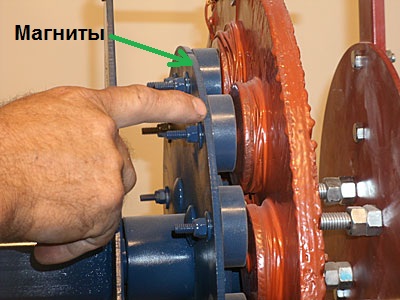
Permanent magnets have also found their place in power generators. Synchronous generators for domestic wind turbines, for example, are one of the applied areas.
On the circumference of the stator of the generator there are generator coils, which during the operation of the wind turbine are crossed by the alternating magnetic field of moving (under the action of the wind blowing on the blades) permanent magnets of the rotor. Submitting the law of electromagnetic induction, the wires of the generator windings crossed by the DC magnets in the consumer circuit.
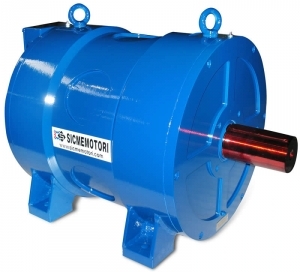
Such generators are used not only in wind turbines, but also in some industrial models, where permanent magnets are installed on the rotor instead of the excitation coil. The advantage of solutions with magnets is the possibility to obtain a generator with a low nominal speed.
Magnetoelectric devices and mechanisms
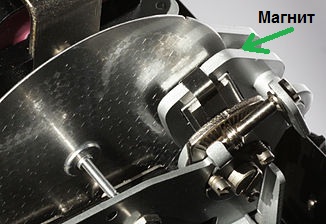
V mechanical induction electricity meters the conducting disk rotates in the field of a permanent magnet. The consumption current, passing through the disc, interacts with the magnetic field of the permanent magnet and the disc rotates.
The higher the current, the higher the speed of rotation of the disk, since the torque is created by the Lorentz force acting on the moving charged particles inside the disk on the side of the magnetic field of a permanent magnet. In fact, it is such a counter AC motor low power with stator magnet.
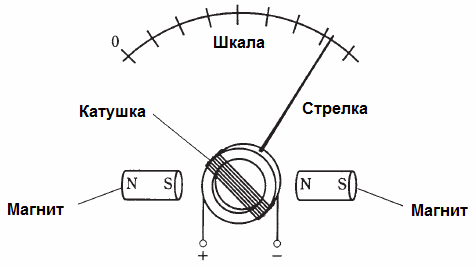
To measure weak currents use galvanometers — very sensitive measuring instruments. Here, the horseshoe magnet interacts with a small current-carrying coil that is suspended in the gap between the poles of the permanent magnet.
The deflection of the coil during measurement is due to the torque generated by the magnetic induction that occurs when current flows through the coil. In this way, the deflection of the coil turns out to be proportional to the value of the resulting magnetic induction in the gap and, accordingly, to the current in the coil conductor. For small deviations, the scale of the galvanometer is linear.
Permanent magnets in household electrical appliances
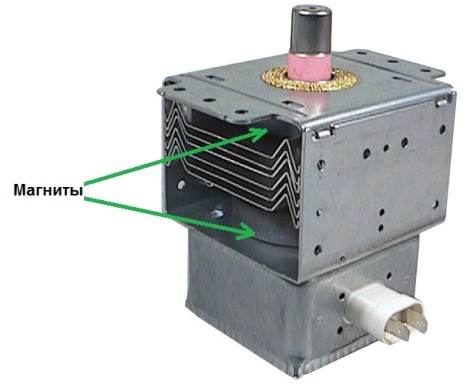
Surely there is a microwave oven in your kitchen. And there are as many as two permanent magnets in it. To generate electromagnetic waves Microwave range installed in the microwave magnetron… Inside the magnetron, the electrons move in a vacuum from the cathode to the anode, and in the process of their movement, their trajectory must be bent in order for the anode resonators to be excited powerfully enough.
To bend the electron trajectory, ring permanent magnets are mounted above and below the vacuum chamber of the magnetron. The magnetic field of permanent magnets bends the trajectories of the electrons so that a powerful vortex of electrons is produced, which excites the resonators, which in turn generate microwave electromagnetic waves to heat the food.
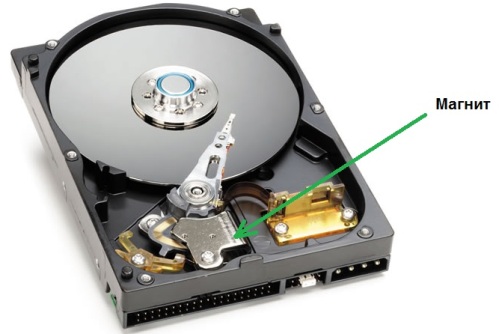
In order for the hard disk head to be precisely positioned, its movements in the process of writing and reading information must be very precisely controlled and controlled. Once again, a permanent magnet comes to the rescue. Inside the hard drive, in the magnetic field of a stationary permanent magnet, a current-carrying coil connected to the head moves.
When a current is applied to the main coil, the magnetic field of this current, depending on its value, repels the coil from the permanent magnet more or less, in one direction or another, thus the head begins to move and with high precision . This motion is controlled by a microcontroller.
Magnetic bearings in electricity
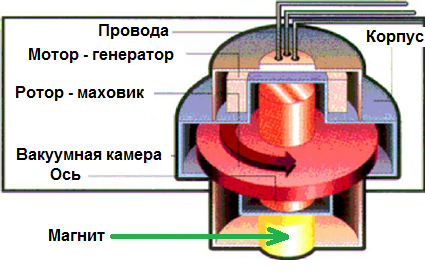
To improve energy efficiency, some countries are building mechanical energy storage for businesses. These are electromechanical converters operating on the principle of inertial energy storage in the form of kinetic energy of a rotating flywheel, the so-called kinetic energy storage.
For example, in Germany ATZ has developed a 20 MJ kinetic energy storage unit with a power of 250 kW, and the specific energy density is approximately 100 Wh / kg. With a flywheel weight of 100 kg while rotating at a speed of 6000 rpm, a cylindrical structure with a diameter of 1.5 meters needs high-quality bearings. As a result, the lower bearing is made, of course, on the basis of permanent magnets.
